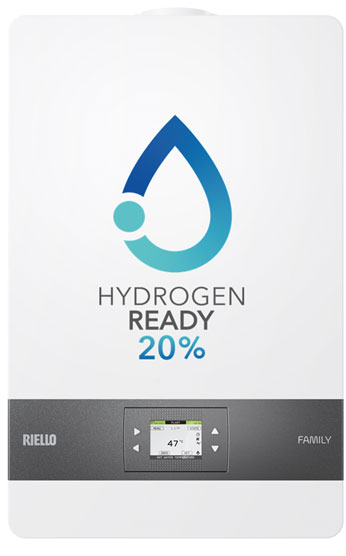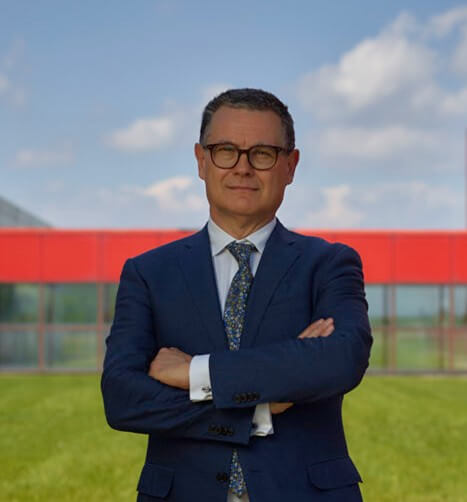NEWS
Hydrogen: Riello looks towards the heating solutions of the future, embracing challenges and opportunities.
Decarbonisation: the roadmap for the European Green Deal
According to the latest report published by ISPRA (which stands for Istituto Superiore per la Protezione e la Ricerca Ambientale – the Institute for Environmental Protection and Research), the residential heating sector accounts for around 60%* of the total CO2 emitted into the atmosphere. A significant impact, which highlights the fact that decarbonisation remains one of the biggest challenges in the European Union's long-term strategy to achieve a modern, competitive and climate-neutral economy by 2050.
This commitment to the environment is also deeply felt and robustly supported by the current Italian government. Indeed, the establishment of a dedicated Ministry of Ecological Transition and the revision of the National Recovery and Resilience Plan for Italy render this roadmap a crucial component in the country's post-Covid recovery.
In recent years, hydrogen (H2) has become increasingly established as a valid alternative for the energy transition; indeed, the use of hydrogen is included in the European Commission's strategies. As highlighted in its communication COM (2020) 301 of 08.07.2020 “A hydrogen strategy for a climate-neutral Europe”, this chemical represents one of the solutions available in order to achieve decarbonisation and to reduce CO2 emissions.


“With regard to the energy transition, domestic heating is a highly complex area.” comments Riccardo Rompani, Residential Product Marketing Manager & Trade Associations Manager for Riello, who adds: “As it currently stands, hydrogen still only represents a small portion of the global energy mix, which is largely made up of fossil fuels.
The growing focus on issues such as pollution, climate change and the need to implement the various European plans is undoubtedly leading to new and interesting opportunities.
However, in order to get to the point where we have a power supply that is 100% based on hydrogen, a number of critical issues must first be tackled, linked to the impact that the widespread adoption of this new technology will have on the country's infrastructure.”
Hydrogen: a natural gas with great potential
Colourless, odourless and tasteless, hydrogen (H2) can be burned without producing waste products such as carbon dioxide, dust and unburnt substances, and as such, is the solution of the future in terms of fossil fuels. Currently, there are three types of hydrogen - Grey, Blue or Green - obtained using different production processes, which also determine the level of purity.
The ultimate goal is to produce green hydrogen via a process of reverse electrolysis, powered by water and electricity from renewable sources; this process only releases water vapour into the atmosphere. This solution comes with a host of advantages and, according to the EU Hydrogen Roadmap, will be able to meet up to a quarter of the total energy demand by 2050.
“Hydrogen, a sustainable, ultra-low impact solution, is an energy carrier with very high potential, and can be transported through the existing gas network.”
Comments Rompani, who continues: “It is already in use in the UK and the Netherlands, where a number of significant pilot projects are already underway in residential settings; these projects are set to result in the large-scale installation of boilers that are 100% hydrogen powered within a few years.
Germany has also decided to go down this road, with a nationwide investment plan.”
Rompani emphasises: “As a company with expertise in the heating sector, we believe it is necessary to focus on a gradual energy transition that is in line with the goals set out by the European Commission, but is simultaneously technologically sustainable: in other words, this must be a process that takes both the existing infrastructure and the costs to the consumer into consideration.”
Affordability, transportation and safety: the challenges posed by hydrogen
Expensive to produce, difficult to transport, safety issues: these are the key reasons that currently stand in the way of the rapid spread of hydrogen-based solutions in Italy. Furthermore, hydrogen is lighter than natural gas, and is extremely volatile: it is therefore more complex to store it, both at the distribution stage and ahead of consumption.
Accordingly, the transportation and distribution network must be modernised, in order to ensure that it is suitable for carrying 100% hydrogen: these operations represent the biggest cost.
The European Hydrogen Backbone (EHB) recently presented a new analysis which focused on the supply, demand and transportation of hydrogen in Europe, which is accompanied by a map identifying a network of around 40,000 km that could be in operation by 2040, linking 19 Member States, Switzerland and the UK. Finally, it highlights the fact that natural gas pipelines are actually the most competitive option in economical terms, even when compared to power lines, and without taking into account the costs associated with flexibility, such as those required for storage.
What Riello offers
As a direct result of its sustainability-focused approach and its extensive experience in the field of industrial heat generation, Riello constantly invests in research & development activities, with a view to steering future domestic heating solutions towards new generation systems that are designed to be powered by a hydrogen mixture.
“The long-term goal of Riello's research and development department is to produce boilers that are 100% powered by hydrogen.. Currently, the company is pursuing a policy designed to reduce atmospheric emissions, working on strengthening a mix of different technologies for domestic heating - including electric heat pumps and Hydrogen Ready boilers- which are able to operate using mixtures of up to 20% hydrogen and natural gas, with the same safety levels required for traditional methane-based systems," concludes Rompani.
20/10/2021
